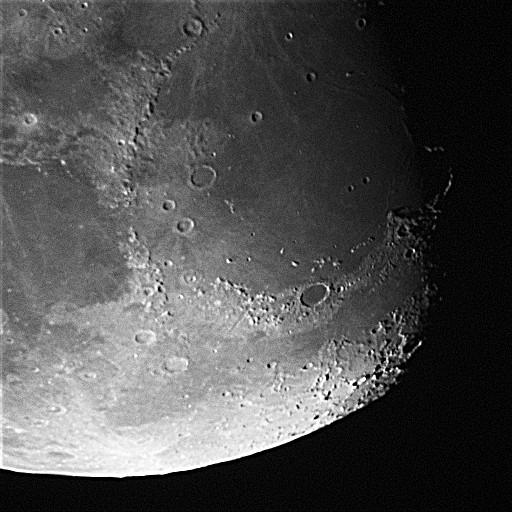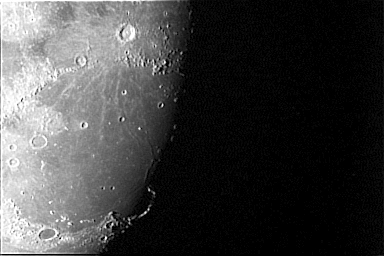
5 millisecond exposure, using a Meade 416xt CCD binned 2x2.
8" f/6 newtonian telescope at prime focus.

In the days following first quarter, one of the most interesting regions of the Moon is visible. In the north, this time is dominated by Mare Imbrium, with is one of the best of the giant impact basins. The Mare is bounded on the south by Carpathian mountains, while the Caucasus mountains separate Mare Imbrium from Mare Serenitatis. To the north are the Alps.
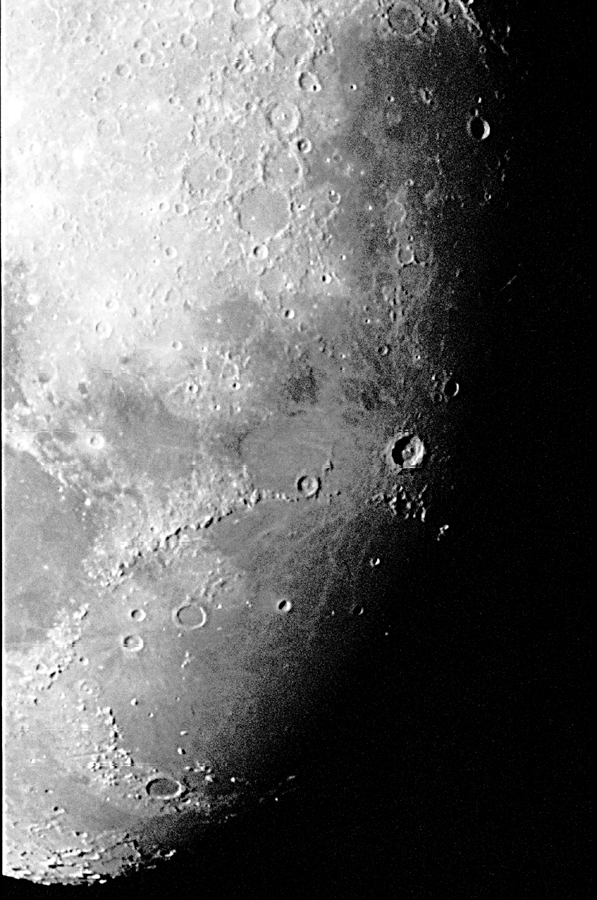
Plato is the dark floored crater to the north (bottom) of the mare, while Copernicus is the prominent crater to the south. On the mountains that form the southern rim of the mare, to the left of Copernicus is the crater Eratosthenes. On the floor of the mare are 3 craters in a right-angled triangle. The two on the left are Autolycus and Aristillus, while the third is Archimedes. To the right of Archimedes is the crater Timocharis and to the right of this crater, there are 2 more pointing up towards Copernicus. These are Lambert (bottom) and Pytheas.
In the mountains to the left of Plato is a grove cutting across the mountain range. This is the Alpine Valley . A real challenge for lunar observers is the rill that runs down the centre of this valley. Above the Alpine Vally is a crater within the walls of an older crater. This is Cassini.
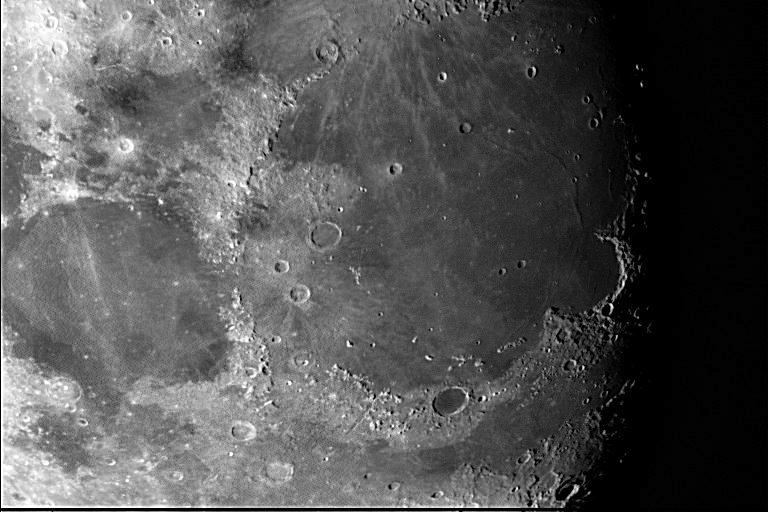
When the moon is about 9 days old, a spectacular bay in visible on the northern rim of Mare Imbrium. This is Sinus Iridium, the Bay of Rainbows. This is actually the remains of a crater that formed not too long after Mare Imbrium and was later partially flooded by the lava that filled the mare.
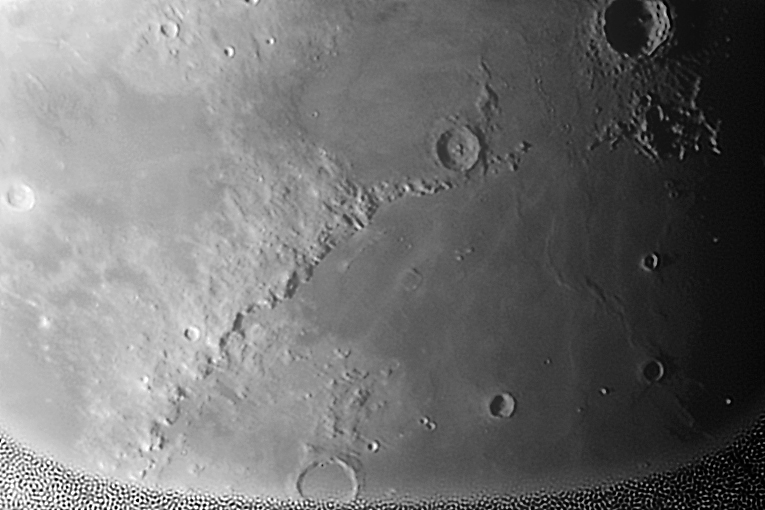
This image shows the southern portion of the maria, between Copernicus and Archimedes.
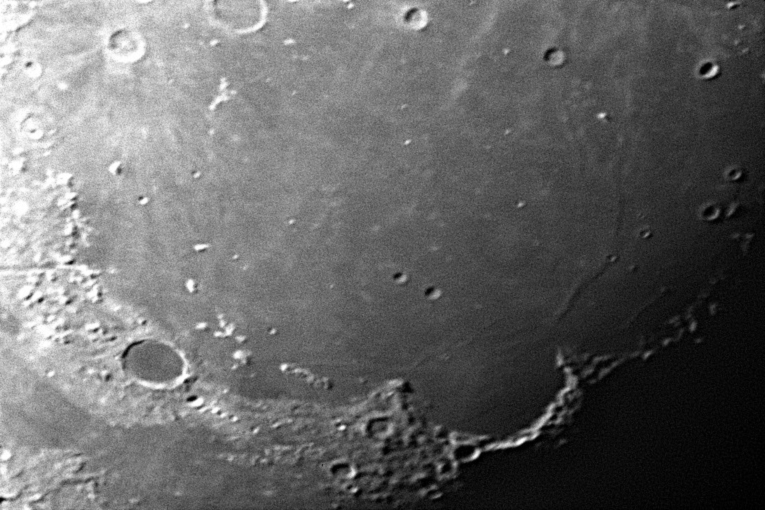
To the south of Plato there are a number of isolated mountains on the maria and between Plato and Sinus Iridium is the unusual feature called the Straight Range. Presumably these are what remains of terraced walls from the original impact basin.
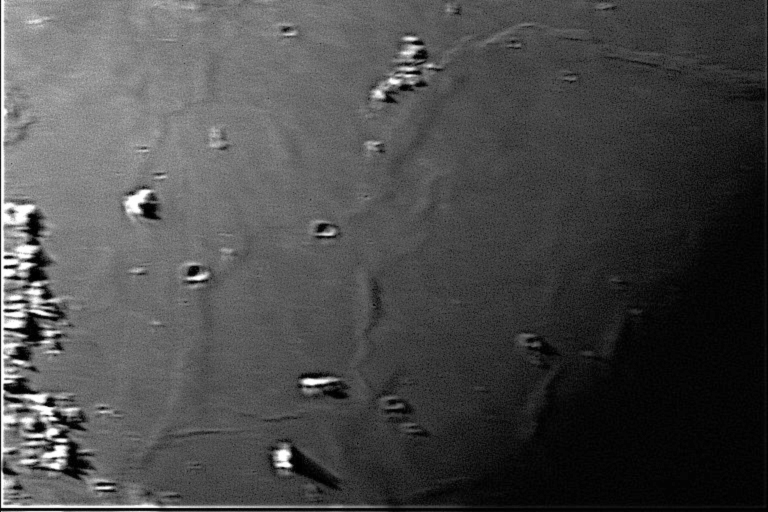
Here the mountain Pico casts a long shadow in the dawn light. The lunar Alps are at the left hand edge.
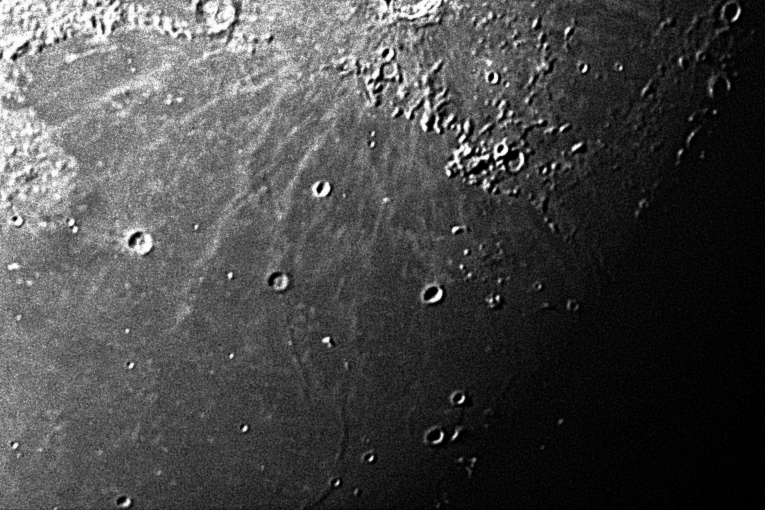
The central regions of the maria, centred on the crater Lambert.
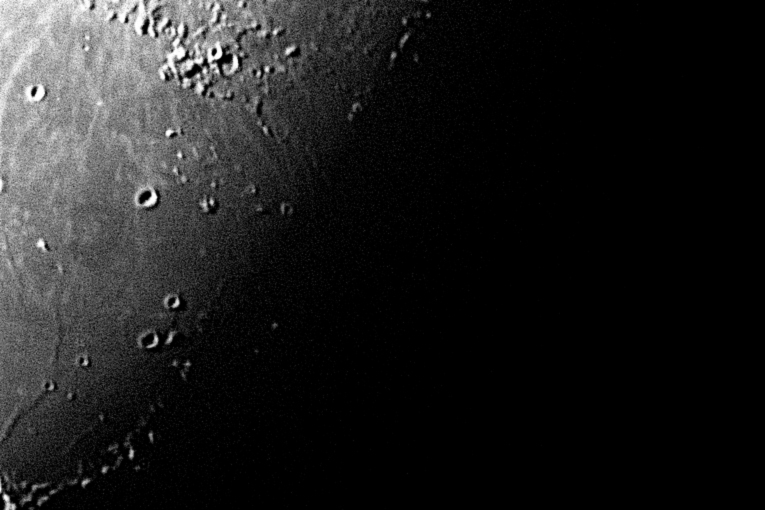
The western region of the maria. The most promient crater is Euler.
